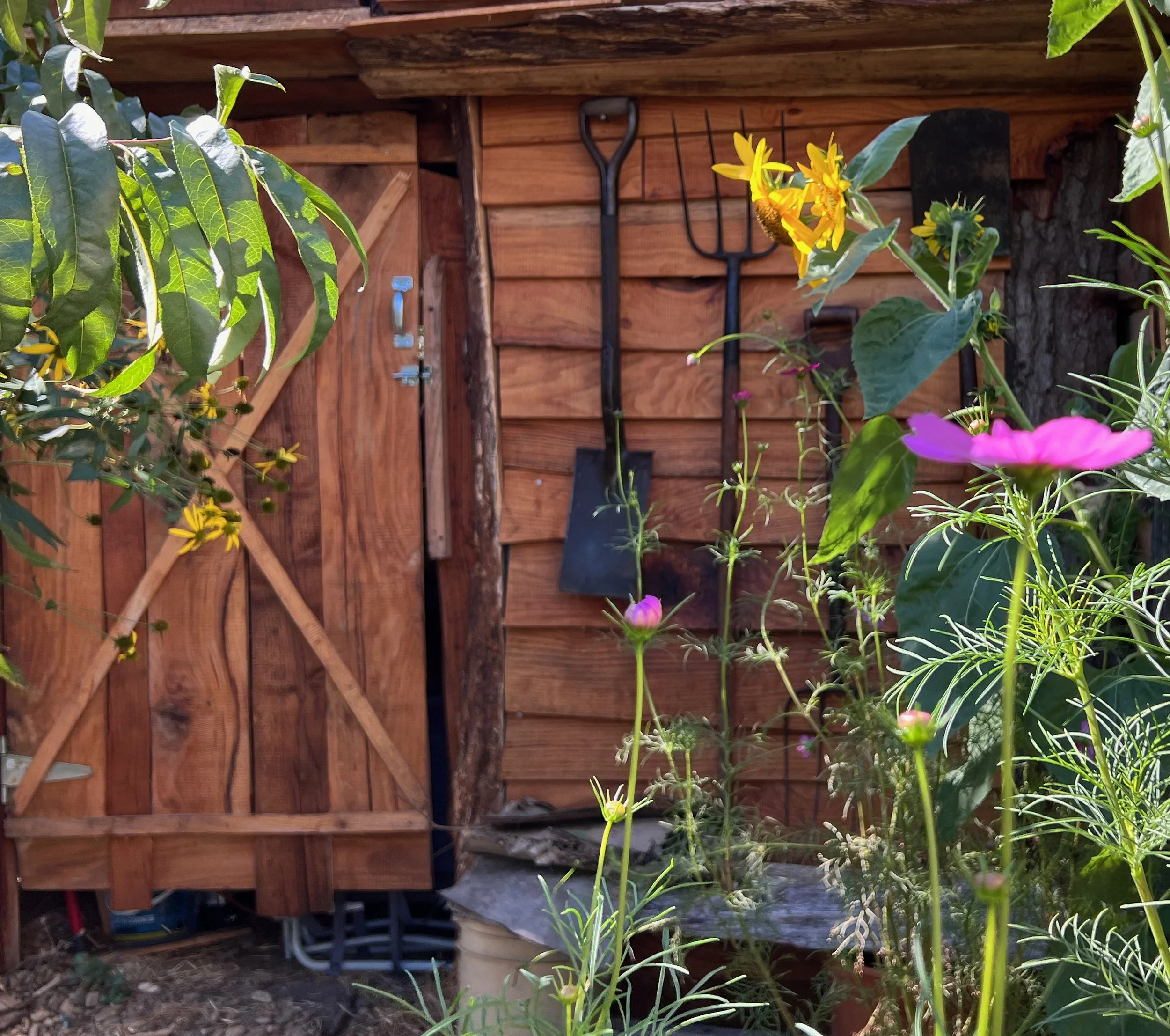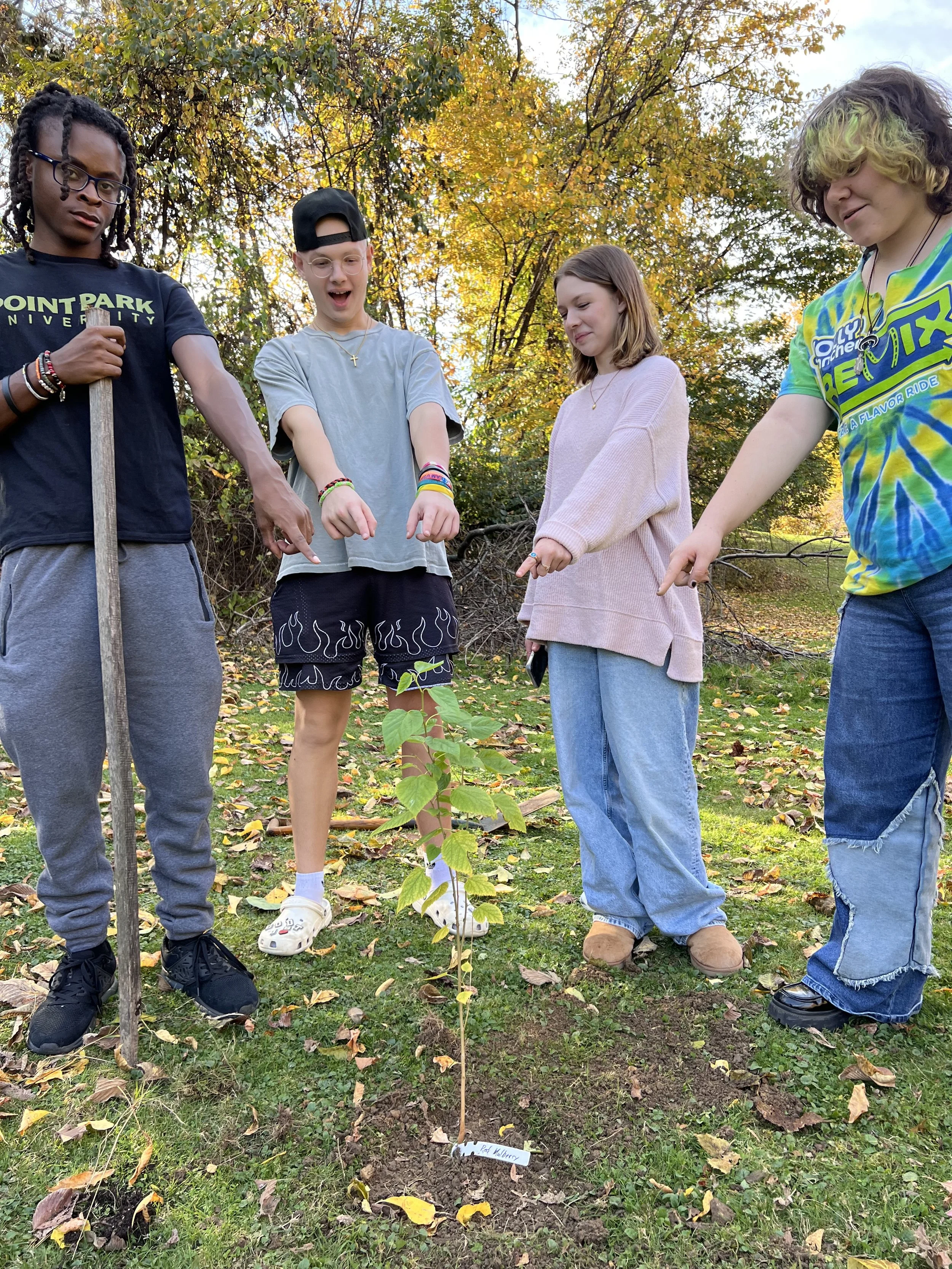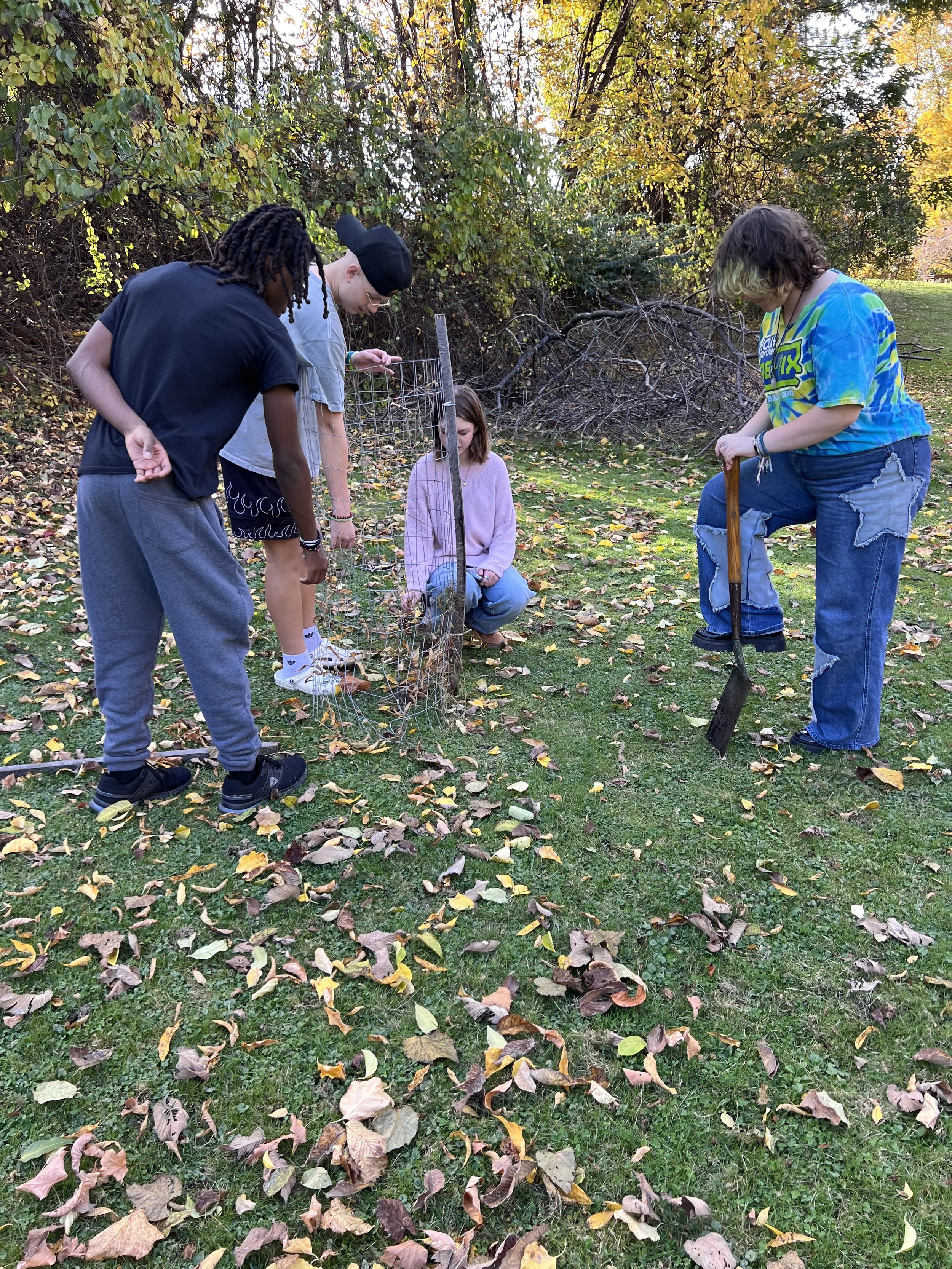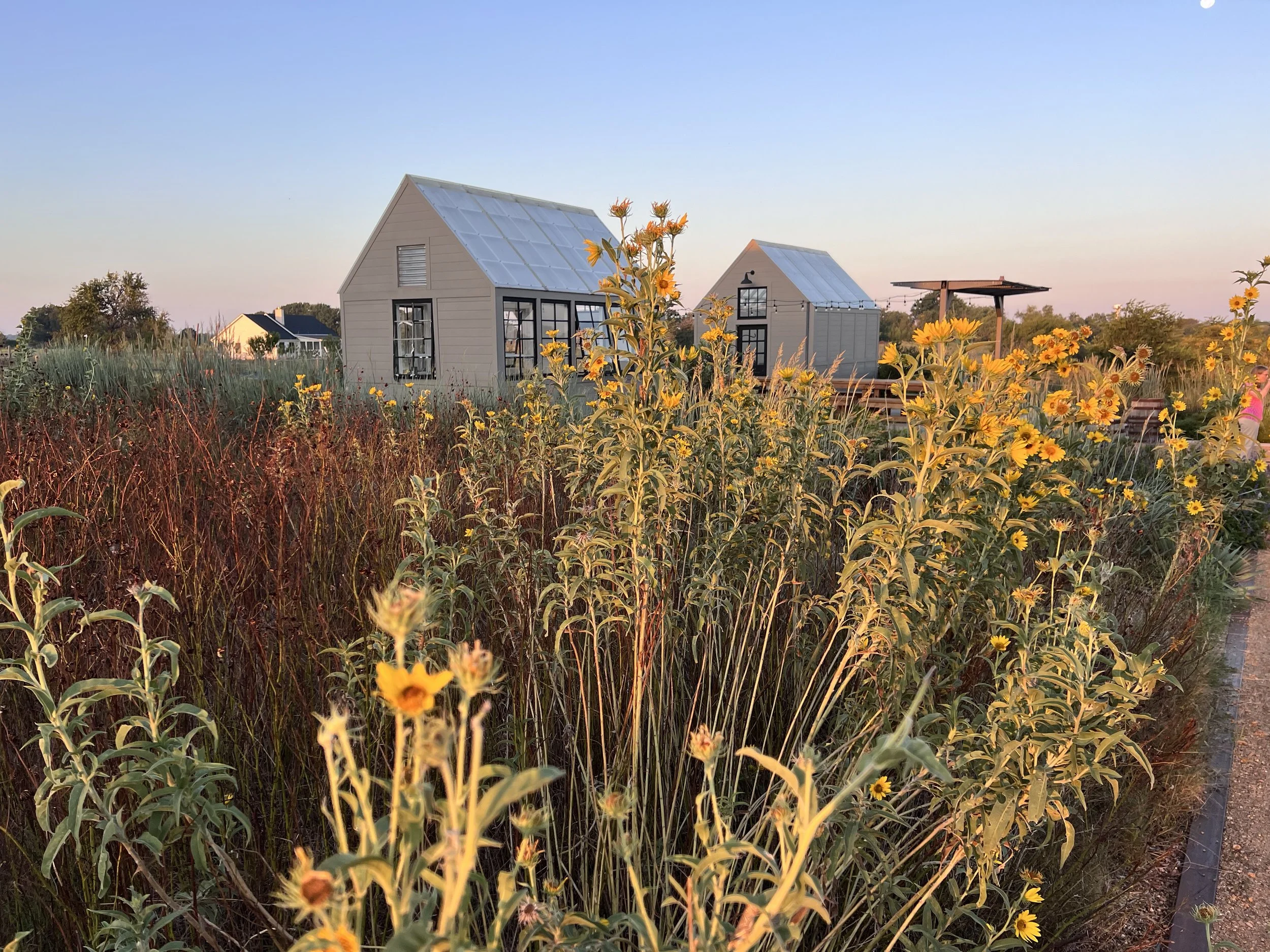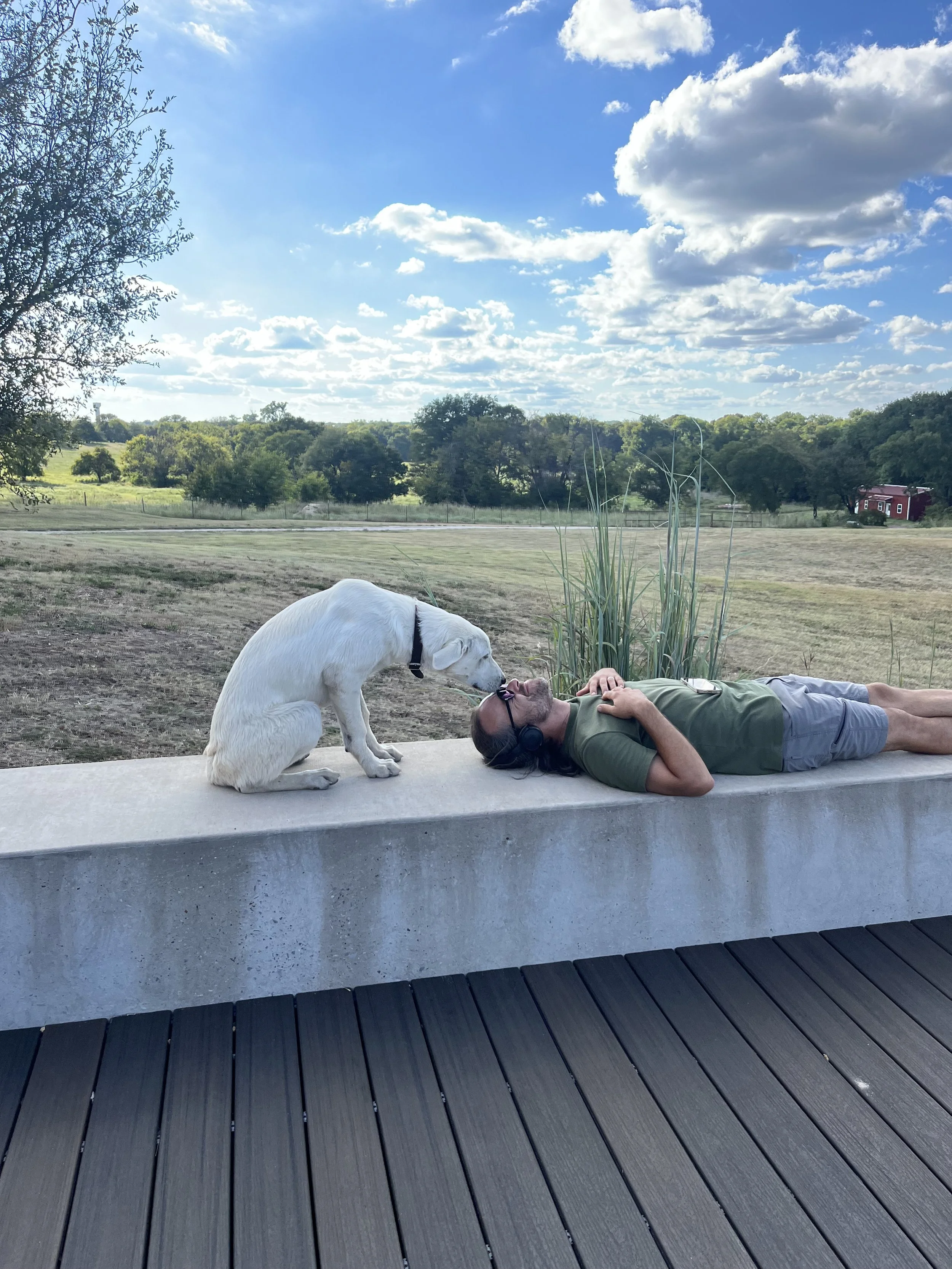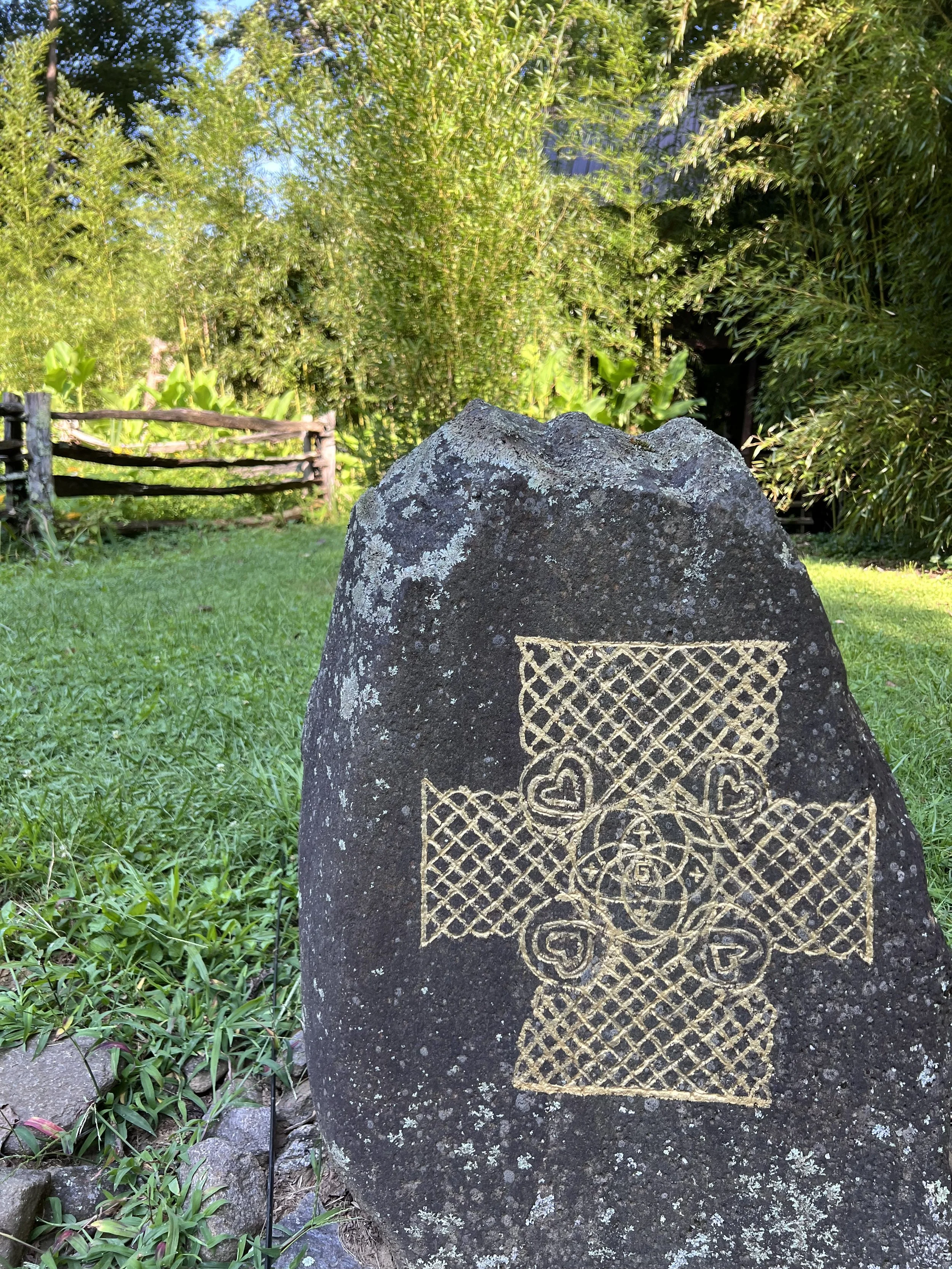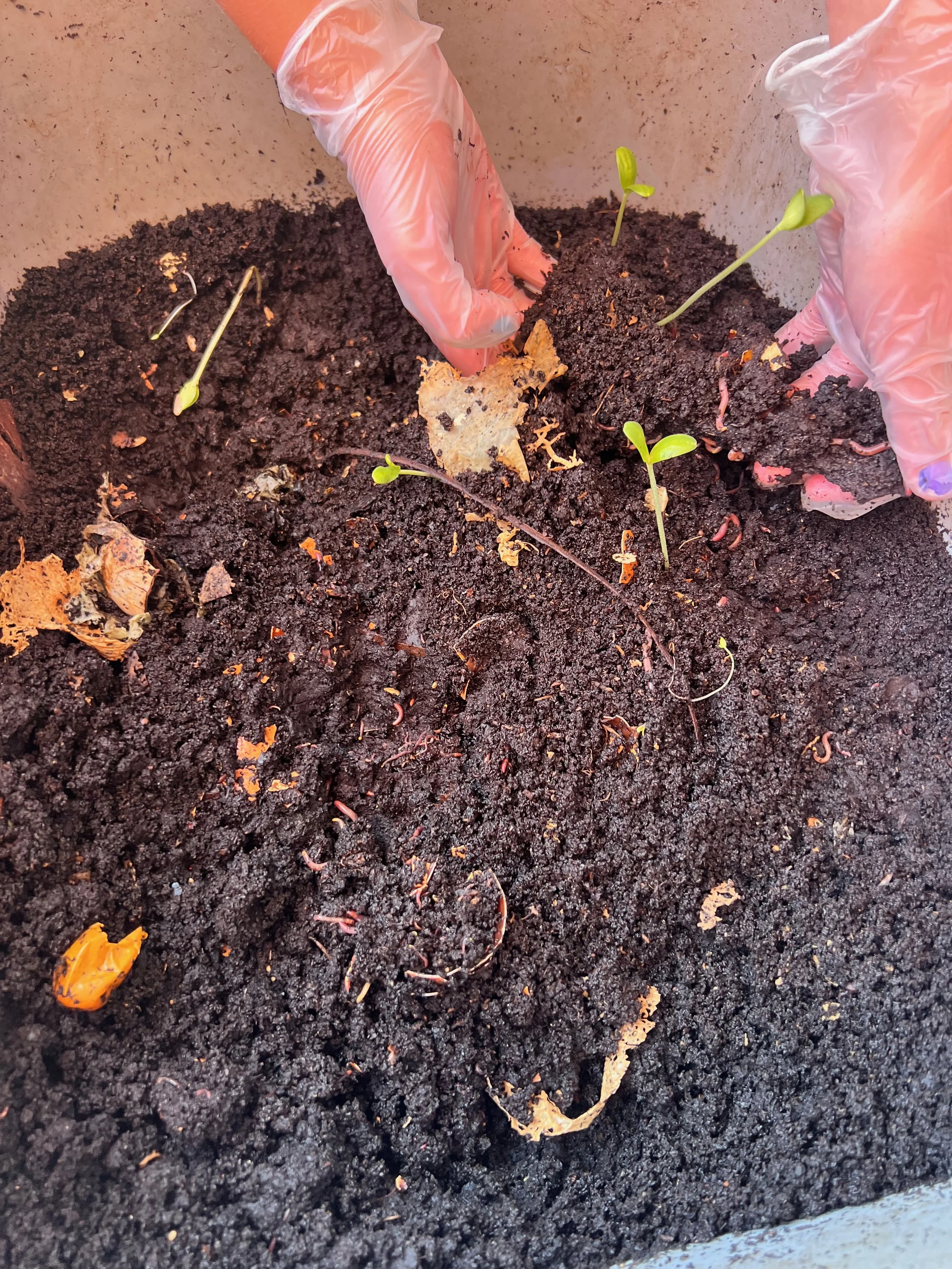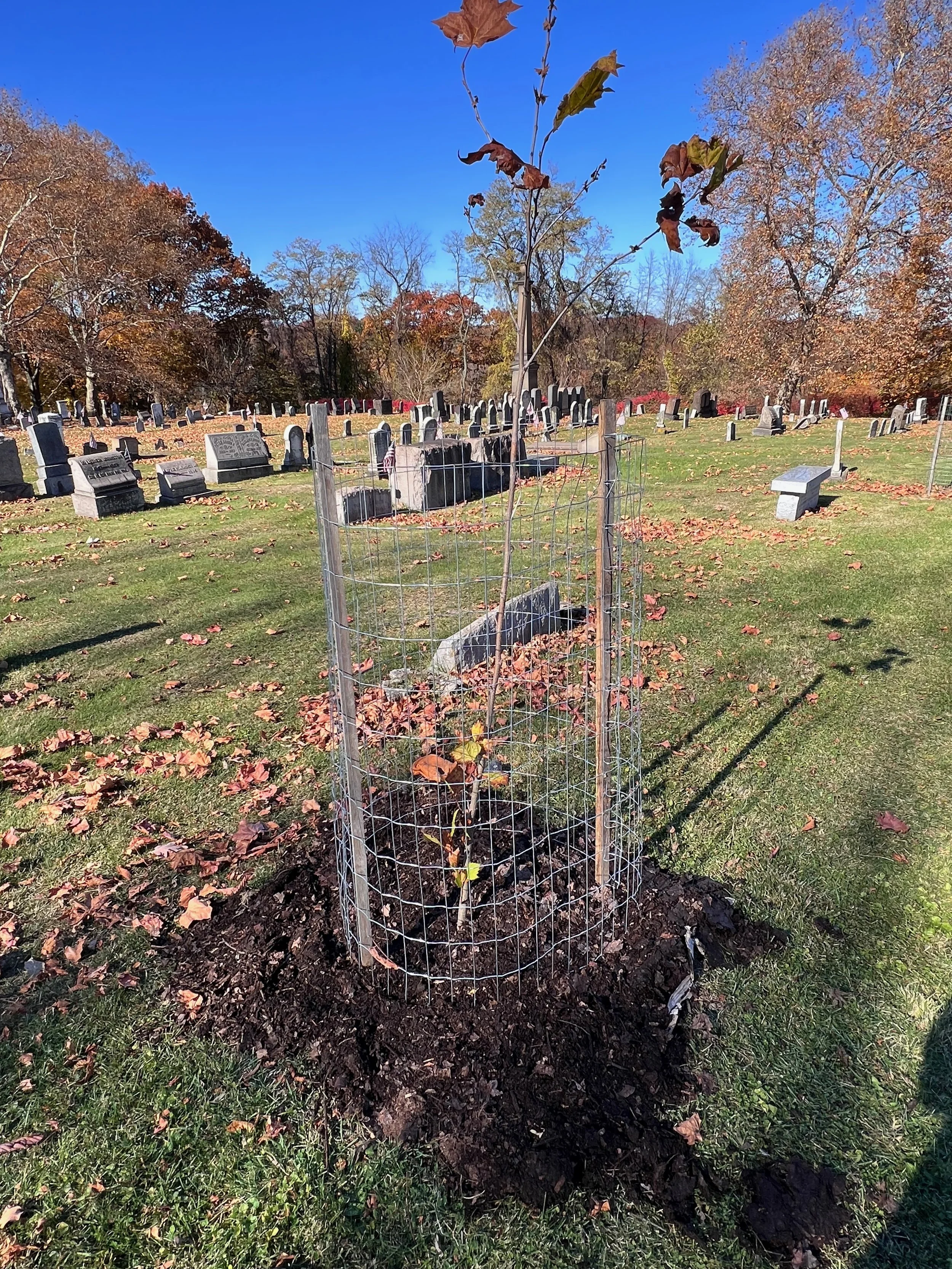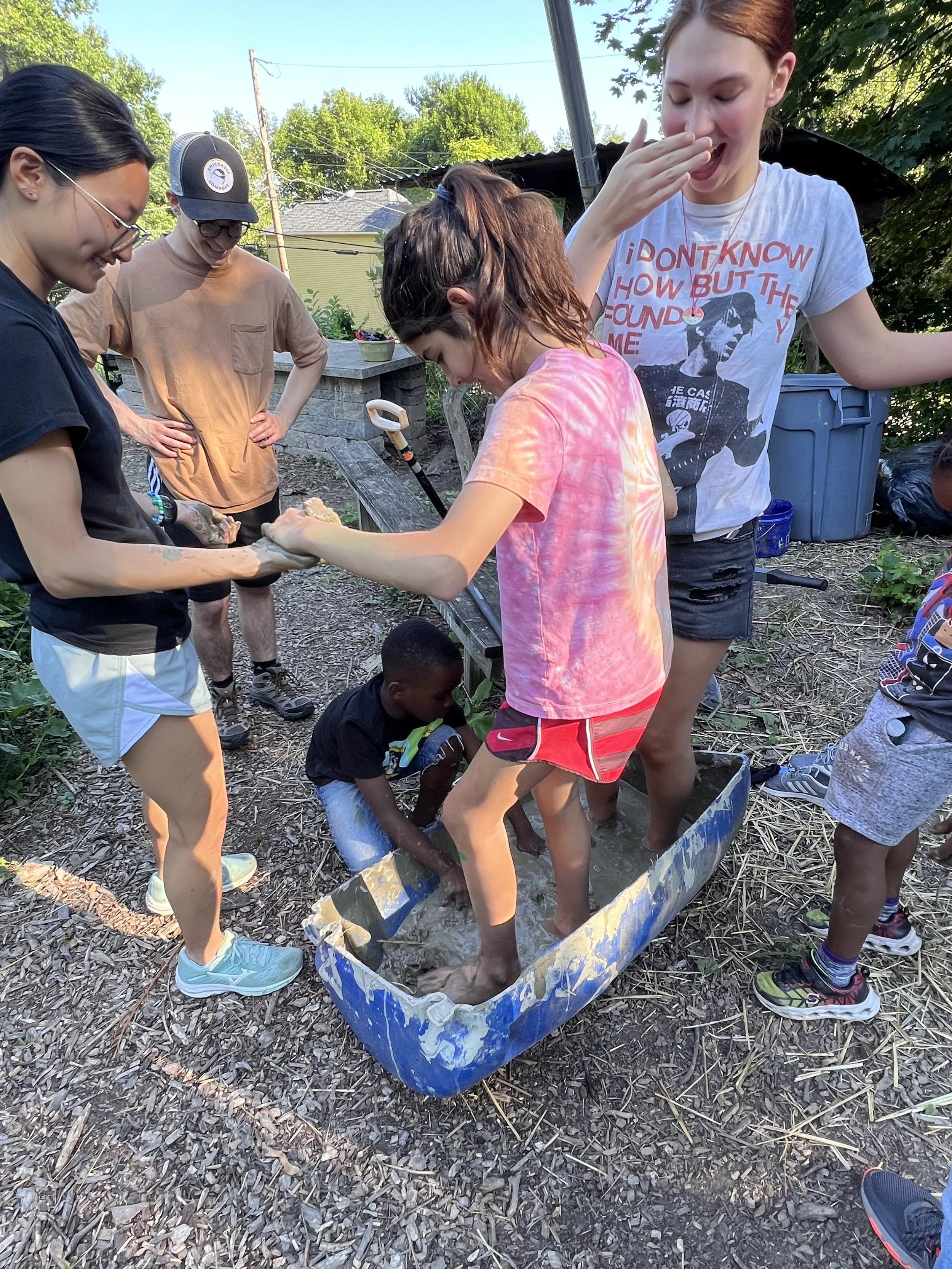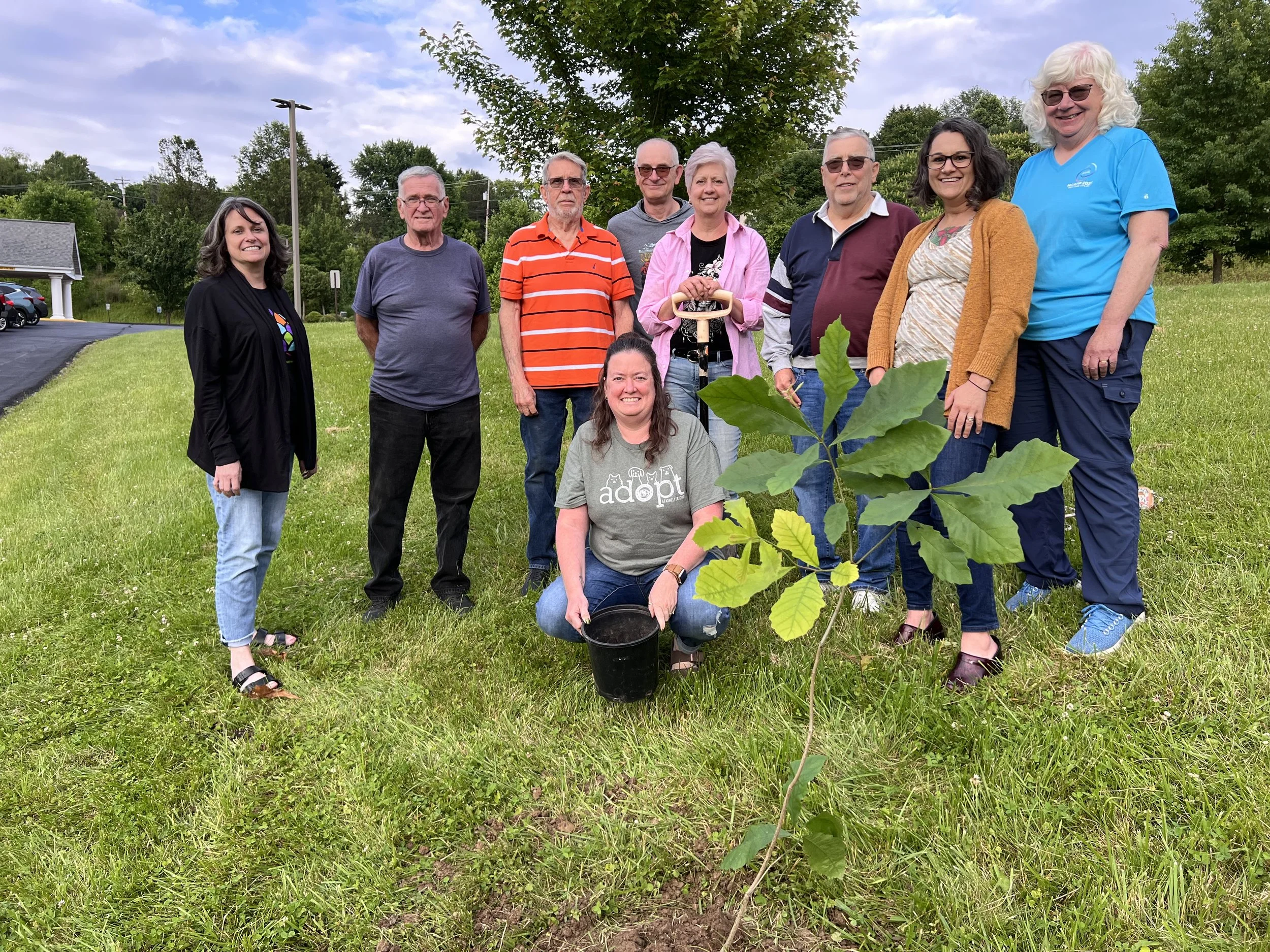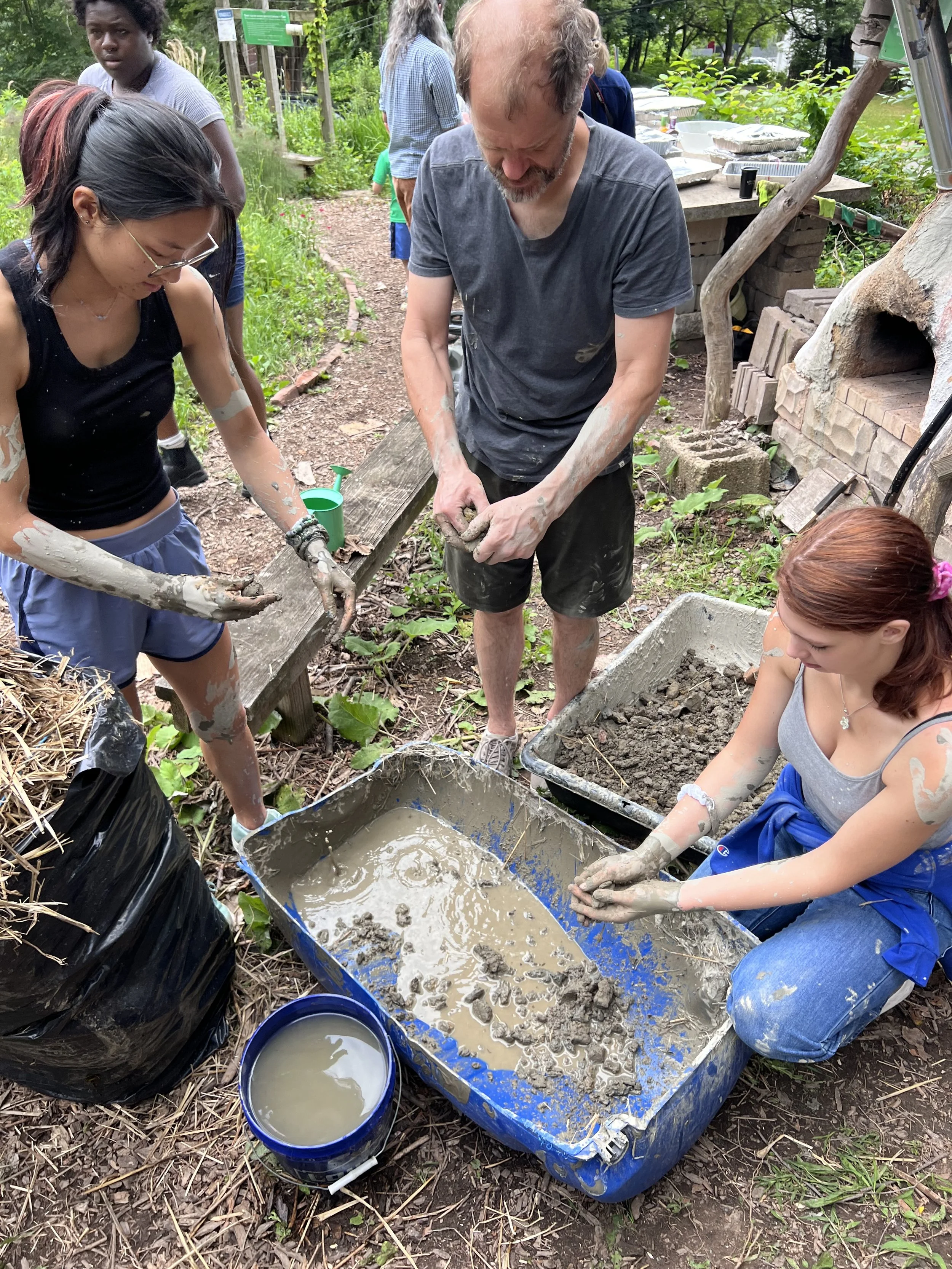Care and Repair:
A Lenten Faith and Practice for 2025
By Evan Clendenin
“The Wonderful Wizard of Oz” book cover.
Over the years I’ve gotten more into the habit of tool care. Every year as gardening season approaches, I take a courageous look at my garden and workshop tools, and the ways I’ve failed to care for them.
I’ve even made tool care a ritual, reviving in my life a ritual of PA Dutch country for fat Tuesday. Along with enjoying a grease-fried doughnut and hot cup of coffee that day before the beginning of Lent, I go through the soul-effort of collecting up my tools, assessing condition, cleaning, repairing, sharpening blades, greasing wood handles.
It’s a soul effort, because the tools may testify against me of my little hurries, half-done tasks, inattentions, and plain lack of care. They may occasion a delightful memory of pruning fruit trees, or a conversation with a family member or co-worker as we pressed on at a repetitive task on the farm. It’s a soul effort, a turning around, teshuvah, to attend to the care of tools. It becomes a moment of gratitude and trust. And the tools last longer.
At Garfield Community Farm, the staff have begun an effort to better organize and care for their tools. In the various places we work, attention to care, repair and maintenance are part of the good we undertake. Sometimes we let these tasks slide.
They don’t always beckon with urgency. There is much unhurried, according to schedule and agreed custom, a little bit boring. In such tasks we may face the prospect of silence with heart, mind and body, while our hands work at something knotty, that can’t always be sorted or solved quickly. But sharp tools, properly greased fittings, smooth handles, and other well-cared for things mean that work can be done with less effort, more safety and less harm for the workers, and the satisfactory sense of skill exercised and gained.
The time devoted to such tasks can be the little stillpoints in a day, and a year, a little lull, or a light and easy task. The stillpoints puncture the grand designs and unreasonable expectations of our schedules with the offer to ‘be here now.’
By doing so we can live in ways that counter and transform our wasteful culture. We resolve personally to take good care of material things. We re-orient and persist in concerted social efforts to care, repair, maintenance our homes, industries, tools, institutions, agreements, convenants, truths, agricultural and wild lands, and the other forms of life we depend upon.
Gardeners, smallholders, workers of all kinds undertake daily effort to prepare their tools and themselves for good work. Farmers who tend big acreages invest weeks and months in the repair and maintenance of equipment and various infrastructure to prepare for planting and harvest. And they depend upon workers, traditions, schedules, and also contractually-promised funding from banks and the Federal government in order to do so. And we depend upon them receiving these things.
Care and repair. Let nothing-personal demand, urgency, threat, fear-obstruct you from such important deeds. Small steps of care and repair confer a deeper capacity of soul and strength to meet the reality with truthfulness and compassion. In tool care, we practice a caring regard for reality.
A caring regard for reality translates into an unswerving willingness to turn again and behold the moral and spiritual worth of God and your neighbor. We fail, but we keep in the way of this moral purpose and vision. It means caring regard for human beings, and for the forms of life that make our lives and enterprises and associations possible. It means caring regard before the reality of the infinite creatures of land and earth, of sun, moon, stars, of birds, insects, death, and life. And it even means regard for tools and other things formed of earthly matter, forms generated by human hands, hearts, wisdom, forms generated within the Word and Wisdom of God.
It means receiving into our being the caring regard of God for us, and living ever more into and from that truthful and compassionate seeing us good and very good.
The church season of Lent offers us grace through a time on earth during which we may renew our caring and truthful regard for reality. From this can flow a desire for repentance, and healing impulses toward repair. We might find an new flowing of gratitude poured out in our hearts, and live more and more out of it. A season of renewed caring regard for reality renews our acquaintance with the ground of our being, gets us ground-ed.
Being so ground-ed, we gain humility, a knowledge and willingness to live with the limits, gifts and true shape of who we are and what we are part of. The grace of such a season instills caring regard for reality-for God, the gift of everyday life, for those near us along with ourselves.
And we practice such a season of grace and repentance by everyday deeds of care, maintenance and repair. Getting out for a daily walk. Cleaning that closet where you shove problems. Scheduling a medical appointment, (if you can afford it!) Calling someone with whom you have experienced hurt, and listening well, speaking truthfully with love.
Or, caring for your garden tools.
By such attention and efforts of care, repair, maintenance, building, tending,-we contend against the vice and sin manifest in an opposing attitude, contempt for reality.
Right now, you may feel anxiety, fear, isolation, betrayal, and anger at seeing contempt of the rich and powerful who has grasped the executive branch of the US government in ways far exceeding what is just and right or consitutionally agreed. They demonstrate contempt for reality-for laws, institutions, public good, global ethics, land and water, agreements, and everyday people. They are deeply wounded persons, serial abusers of various sorts, in bondage to sin of contempt for reality. They violate americans and the world, grasping at our common heritage and our public goods.
(And we ourselves, of various political stripes, in our recent cultural celebration of such unthinking tropes as ‘move fast and break things,’ and status as ‘disruptors’ have some self-examination to do too.)
They attack government programs, workers and capacity, a vision of trust and responsibility, and indeed the values of care and repair that guide these, however imperfectly. Public health, education, science, ecological conservation, veteran’s benefits, weather monitoring, travel safety, massive and careful re-investment in housing, energy, inudstrial capacity, social safety net programs you working people paid into, like medicare, medicaid and social security. There are many stories you could tell of the people all over harmed by these actions.
What have you heard? What have you seen?
Among these, we hear from midwest farmers trying to repair and maintain the tools they use to grow the food we and the world eat. Large investments in the public good, land conservation, addressing climate change, and improving the farmer’s own prospects had been carefully negotiated in the Inflation Reduction Act. Those funds were promised and contractually obligated to help farmers build new water and irrigation systems, invest in no-till and cover-crop farming systems and equipment, and more. They have been denied the money due them for work of care, repair, maintenance, investment.
How many everday people have been impacted just recently by this violation and attempt to confuse, divide and ‘put them [us!] in trauma’?
We could recount a long history of contempt by some of the rich and powerful for the vision and promise hidden within our nation- that of realizing human dignity, freedom and equality in an unfinished democratic project that desires to aid the life of all dwelling here.
In the past 50 years, we met contempt for the reality of people, earth, institutions, public good, and the prospect of a humane life in the concerted effort of business to pursue de-industrialization. What we experience now might be understood as the outcome of 50 years of such contempt. They pursued a profit strategy of convincing people that government is the problem, evading taxation, environmental regulations and clean-up costs, breaking unions, exporting jobs, disrupting a diversity of communities, and very notably, choosing to not invest in the repair, maintenance and re-newal of industrial capacities.
That is to say, by not taking care of tools!
This winter, this spring…this season of Lent… and the Easter season of Re-newed Life…
We call you to to turn from contempt and toward caring regard for reality.
We call you to turn with courage to the contempt you carry. Whether you see others or yourself that way, may the caring regard of God gaze upon you with grace, truth and compassion. May it pierce your heart, change you, heal you, care for and repair, renew you.
You can do so in smaller everyday ways by taking up acts of care and repair. You can sharpen, grease and repair tools. You can be better prepared for one task, while pruning away others. You might patch some clothing, rendering it more beautiful in the process. And in your prayer you might wonder what work of repair and beauty like it might God be doing within and around you? You might consider that one person you know with whom you might attempt to repair something broken, frayed, or estranged.
If appropriate, you can ask for forgiveness, offer words of gratitude, make an offering of reparation. Or start by extending truthful and caring regard.
And with others we can make the great soul effort of caring regard for reality. For lands and their creatures, for working people, and the good of work done well, and the tools needed to do it. Regard for the grounds of our being found in many and diverse forms of life upon which we depend, and which require care: habitats, languages, institutions, associations, tools, public resources, close to home care and mutual aid, common goods. Truthful words, and the courage to make life good for others and ourselves.
May you receive courage and persistence,
in the face of contempt, and human destructiveness,
to care, repair, maintain and renew what is
good on this good earth,
and, made in the image of God,
destined to grow into the divine life and likeness,
to live with your whole being
in caring and truthful regard.
Join an Online Guild this Winter
Happy Winter Solstice… celebrating the longest night of the year.
Darkness is a curious thing in religious contexts. We often vilify the darkness as the place of evil, danger and the absence of goodness. But, darkness can also be a place of wonder, mystery and contemplation. What might the darkness be ready to unveil in your life? Maybe the darkness is inviting you to seek and find something new.
In the darkness of winter we’re unveiling a new opportunity with Wild Indigo. Join us for our first fully virtual guild, where we'll explore the goodness of all creation and God's call in our lives to care for the earth, care for others, and demonstrate the peaceable kingdom of heaven. We’ve been leading guilds all year round in 2024 and have loved the experience of working with a wide variety of people from Western PA. Now we want to open it up and make this experience available to anybody, anywhere, who wants to connect with God, others and the natural world. Evan and John will host eight gatherings on Monday evenings, 6pm ET starting February 17th. Payment is "donate-what-you-can" for this guild. Send us a message and sign up today! For more info, check out our website. Zoom link coming soon. Learn more on our website. Sign up by emailing us and we’ll send you the zoom link.
Oh yeah, and help us get ready for 2025 with a donation today! We need to raise about $2000 by the end of December, every bit helps.
Dear Friends, Let’s do this!
Fifteen years ago we (John Creasy and Evan Clendenin) helped start Garfield Community Farm in Pittsburgh’s east end. Hundreds of youth and adults continue each year to experience this place of community and care for land and people, through healthy produce, education and service programs, and simply being there.
Our first guild after planting our first oak tree!
Now we want to extend the vision of faithful people restoring creation to a broader network of faith communities. In 2024, Wild Indigo Guild worked with five groups of youth and adults from four different churches and organizations. We guide them through our eight learning themes in contemplative christian ecology, forming a ‘guild’ of people growing further in their connections with creation and God. We accompany them to discover God’s restorative being in their land, community and lives. Each guild uncovers the missional call for their community of faith, a call that always brings together creation care and people care in their neighborhood.
By God’s grace Wild Indigo Guild has already born good fruit. We have worked with seven-year-olds and seventy-seven-year-olds. Individuals see anew how their land, lives and congregations can demonstrate God’s restorative love. They yield healthy food, clean water, habitat for wildlife, and places they and their neighbors reconnect with the peace of God.
The beginnings of a food forest at Beulah Presbyterian Church!
We hope to see Wild Indigo continue this work in 2025 and beyond. We believe that the Spirit is calling all of us as followers of Jesus to experience and to demonstrate God’s love for people and all creation. We expect to begin work with several congregations and groups, accompany our 2024 guilds, collaborate in youth-work, and offer opportunities for fellowship in tending the earth with all our hands. Your support nurtures this work.
This feels like a huge risk. We move away from the comfortable routines and pay of pastoral ministry to a less predictable mission “field” with plenty to harvest. And we laborers need to provide for our families! We take this risky step in ongoing discernment and fidelity to our vocations. This work has shown itself valuable for others. So we trust God and a wider community.
John and Evan on a hike at Wolf Creek Narrows.
Would you consider becoming a foundational donor toward this new work? Your monthly gift would support our families as we pursue this new work. It will expand our reach and continue to make ends meet as we get this new ministry off the ground.
Help us create this new endeavor together! Just scan this QR code with your phone’s camera, or visit www.wild-indigo-guild.com/donate
Trusting in God’s Provision,
Rev. John Creasy
Rev. Evan Clendenin
1400 Hawthorne Street, Pittsburgh, PA 15201
Advent Offering: Keeping Afloat
Soon the season of Advent will offer us hope at the endings, and we pray, in-breakings of new life we can take hold of in deepened trust and courage.
I want to invite you to an Advent class series: Keeping Afloat.
This is a seasonal offering of Wild Indigo Guild, and you can also find more about it at www.boatandtable.org/build.
Most simply, I offer time to gather and keep in touch with that of God in you and others. These days of the year and history may be feeling especially dark and uncertain. As the seasons change, disappointments erupt, times of uncertainty swirl, we can listen together for consolation, and hope that runs down deep.
We will explore five practices drawn from the centuries of Christian life that can aid you to sink down contemplatively into the stability, integrity and beauty of the divine life.
Imagine them as a craft by which to float through the smoother and rougher waters we pass through of various kinds.
Reading the Land
Praying in Time
Accompanying Others
Nearing Stillness
Working with Your Hands
We will meet for an hour to take an easy paddle through a series of slides that include art, images and quotes that afford ways to see, be and act, knit with ecology and life today. Our contemplative time and conversation will lead us toward practical steps for your life now. (And it will be relaxing and fun to look at the art and quotes I've 'curated' for us to ponder together!)
Time and Dates: gather 'online' Monday 4-5pm Pacific/7-8pm Eastern on November 25, December 2, 9, 16 and 23. With enough people, I can offer two evening times, one Pacific and one Eastern.
To sign up, simply email, call or text me to say that you'd like to take part. . Please provide me an email address, you will receive a link to join the meeting near to the first session.
The class is free of charge, and I welcome your sharing this class with your friends, local community or church.
Attend as many or as few as you like. I hope to see or hear from you soon.
in hope and peace,
Evan
John Shute Duncan, Public domain, via Wikimedia Commons
Commit to the Renewal of Creation
By Evan Clendenin
What way of life for you would express a commitment to God’s renewal of creation? Maybe in regions of the country that are naturally forested, it would involve planting trees?
Beulah Church Teens plant a native Red Mulberry.
These four young folks worked with John recently to plant a tree on the grounds of Beulah Presbyterian Church, just east of Pittsburgh. Several years ago the church planted hundreds of trees around the property. Having learned some lessons, they are regrouping to commit to ways to more manageably plant and tend to their care in the long haul that unfolds day by day.
So John and the crew walked around to look at the various trees, undertake some tree care, and even plant a new tree. I can well imagine this was a good lesson in how to plant a tree well. And we can hope that the experience will root in their hearts, and grow as a desire to stay with this and all the trees they plant, to see and assist the life God is bringing about in that place thru the trees and more.
A life lived out of commitment to the renewal of creation. Planting a tree. Not just one, but many, over and over. And not just you, but teaching others, showing them by example, by your love, enthusiasm, care and wisdom for this task of tending the life, breath and soil of the ground we inhabit. And not just teaching, but learning, and making room for others to watch, listen, learn, contribute, receive, pray, enjoy, as well as work. Planting, and staying with it, tending the tree, the land, the life growing up. To return to the tree, and to gaze upon its beauty your whole life long. To take care of it through its days and years, however long you are here, and to teach others to go and do likewise.
And in taking such care, to find the tree part of a much larger, diverse, interconnected place on earth. Returning to the tree again and again, you find your whole being also part of the land, part of its renewal. And not just yourself, but generations into the future, generations into the past. The souls and bodies of those before us, human like us with loves, gifts, wrong doing, learnings, good deeds, and hope of ‘on earth as it is in heaven.’
The Wild Indigo Guild sessions for contemplative formation invite us to consider how we commit to a life involved in the renewal of creation. The sessions that start a new guild help us grow in awareness and uncover impulses for how our whole being can pray, work and be in the world, guided by a love of God present and at work in all things. Such an awareness can reshape and guide a way of life day by day.
A renewed way of life can emerge out of a commitment to the renewal of creation. It becomes a calling to each one of us to shape the life we have hidden in God according to this abiding and transformative impulse of divine love present and at work for and in us. And we might compare it to those relationships which demand commitment. Think of marriage, taking religious vows, or signing up for national service. These are just a few examples of commitments. They entail a risk, an act of faith in the face of the unknown, and an opening to life lived and work undertaken in love and responsibility to others. We neither enter nor leave such a commitment lightly. These relationships and other commitments will present us with challenges and difficulties. They often mean that our illusions are falling away, and the real work of learning another person, and loving them as they are, has begun to transform you and the other.
And to endure such transformation requires a way of life that grounds, guides and sustains us. It requires becoming part of something much larger than ourselves alone. A way of life that keeps us faithful through time day by and day, and renews in us a present tense awareness, -gratitude, joy, compassion in sorrow,-of God with us here and now.
So you might consider concretely:
What way of life -patterns, habits and practices- would help you remain faithful to grow, learn and love out of a commitment to the renewal of creation?
For example, What would help you plant trees, and return to them, and invite others to be there with you, and to remind you all of the Spirit’s renewal of the face of the earth?
Sister Grove Collective
My partner, Alyssa, and I had the privilege of being part of a song writing retreat for Creation Justice Ministries, a national organization that is helping churches make climate change and ecology central to our faith. The retreat was at Sister Grove Farm an hour north of Dallas, TX. Alyssa and I call each other “partners” because we truly do partner on so much of our lives. For almost thirty years, since we were kids, we’ve partnered together to make music. For the past twenty or so years our band has been called This Side of Eve. On Monday we gathered with another singer-songwriter, a composer, a lyricist, a jazz pianist a classically trained vocalist and a long-time staple of Christian music, Ken Medema. Needless to say, the pure talent and experience in the room when we gathered was overwhelming. I felt under-qualified for sure! But I held to the idea that I brought important connections to the song writing by my work in agriculture, permaculture and sustainability.
The beauty of Sister Grove Farm abounds.
Our task…. we would write new songs that help churches centralize earth-care, climate justice and ecology. These new songs would be used by Creation Justice Ministries in their work, especially in April when they release new tools for congregations for Earth Day, 2025.
Ken Medema, an amazing pianist, singer, song-writer and an even greater human being led the group with wisdom and a humble heart. We were tasked with writing five new songs for congregations to sing all over the country… songs that would inspire action on climate and action to restore God’s creation. But would the group gel? Would certain personalities get in the way? Would there be conflict? Could we bring such divergent styles of music together in our writing? Would we even be able to write one song together, let alone 5? What if we failed to accomplish anything? For two days we would work nearly twelve hours each day. Would we end the retreat burnt out and frustrated?
Important aside! On day one we also met with Brian McLaren to discuss his new book, Life After Doom. This was perfect, since Wild Indigo Guild is leading a book group on Life After Doom starting this Monday, September 23rd! Email John to get the Zoom log in for the book group. All are welcome.
I soon realized that Alyssa and I were not looked down on for not being full time musicians, for not living in Nashville or for not having degrees in musical composition. Instead the team of musicians were curious about each other, without judgment. We heard each other’s stories and realized each one of us had something to bring to the group and the creative process that would ensue.
The group working on a song by Mark.
After two and a half days of persistent work we were done. We had bonded together. We had all sung our hearts out. We had put ourselves out there in vulnerability through our music and our stories. We had seven songs! Not five, but seven! From here we’ll work to record all seven songs. They’ll all be scored and charted. By early 2025 they’ll be ready for listening and learning. They’ll be available for churches to use as they see fit, and along with new curriculum and liturgy developed by Creation Justice Ministries.
Ranger is a five month old herding dog who Alyssa and I kind of fell in love with. Here's he surprised me while I was resting with a wet nose to the face!
My gratitude is overflowing for the time we had, a very short time, but a very powerful time of creativity, work, bonding, sharing and so much more. Stay posted in the coming months as this music is released and look out for Sister Grove Collective! We’ll even be able to use these songs as resources for Wild Indigo Guilds for use in church and worship services.
Sit Spot in the Graveyard
Weeping Willow by Evan Clendenin
Along with younger folks at Beulah Presbyterian church we stepped closer toward the underside of life and green growth this summer. We tried to more fully appreciate the place that death and decay, disturbing as these can be, in the created ecologies God brings forth.
John brought materials for making worm-composting bins one Wednesday. The bins house red worms (Eisenia fetida), which eat, and thereby transform, kitchen scraps and other organic materials into rich soil-makings. The worms help recycle and transform waste and waste-making habits. The ‘worm castings’ contribute nutrients, humus compounds, hormones and enzymes, bacteria, and other mysterious stuff that can aid soil and plant life.
These younger folks stepped right in. They did not complain ‘gross!’ They dirtied their hands making bins. A few of them talked with their parents about bringing home a bin for their household composting. Some of them already had worm-bins at home. They were curious and at ease with looking at these processes of decomposition and decay, and assisting the worms, who do much of the decay work in the creaturely economy.
Youth at Beulah moving worms from our bin to their new one.
We also invited them this summer, like we invite all Wild Indigo Guilds, to find a sit spot. The sit spot furnishes a foundational practice for both our 8 week formation series, and stepping into ongoing contemplative engagement with earth-tending and Spirit.
We invite you to find a place relatively near you, where you pause, and dwell with the place, paying attention to God with the place and with you there. A sit spot can be a place you return to over and over. A sit spot finds you.
What in a place calls out to your spirit to stay a while?
What called out to them was the cemetery. They stayed a while in that hallowed patch of the first presbyterian congregation in what we now call western pennsylvania. They said they felt peaceful as they sat, writing, drawing, looking around.
Later, John showed them how to take charcoal rubbings off of the old stones. They spoke with startlingly mature insight, appreciation and clarity about death and decay as part of the created order, wondering about the people’s lives, and the meaning of that place among the church grounds.
These younger folks stepped right into that place. They aid us and others to pay attention to such places on the church grounds and elsewhere where land is tended for the deposition of the bodies of the dead and their remembrance among us.
We might wonder with them at God’s presence and working in this place where the dead rest, and their place in our spiritual practice of life, death and resurrection.
We would follow their example in such a ‘long, loving look at the real’ against forces that keep us from seeing in this way. We’re captive to the ‘american way of death’ and the burial grounds it fabricates. Broad expanses of mown, irrigated turfgrass kept greenish by an embalming fluid of insecticide, herbicide and synthetic nitrogren fertilizer incarnate a kind of undead ecology. Concrete boxes keep the thought far away that a children’s rhyme so humorously brings near The worms crawl in, the worms crawl out The worms play pinochle on your snout!
That undead landscape wants to keep trees out. Messy apples attract ‘bees’. And leaves fall. What would happen if someone visiting a grave were struck by a falling leaf! They might be suddenly graced with a moment of contemplation… a grave intrusion.
My wife and I like to stop by and walk a little pioneer graveyard near home, settled down beyond view of the expanding olympia suburbs. The old stones, with weathered names, bits of scripture, and chipped symbols, stand amidst massive firs and aged fruit trees. In the autumn we find pink blush crab apples, and tiny sweet pears. American chestnuts grow where squirrels plant nuts from two large specimens planted nearby 150 years ago.
And garry oaks, the native white oak of western washington, still grace this hallowed ground. The Nisqually, Squaxin, Cowlitz and Chehalis peoples of the south salish sea region continue to collect garry oak acorns, and tend camas lilly patches, that once were part of an extensive agro-ecological landscape based on this cascadian oak savannah. And in little patches, even a fading pioneer cemetery, such fragments and refugia hang on.
A tree planted in the cemetery of Beulah Church
What do you notice in the cemeteries and other burial grounds near you?
In what ways might you, your community, your church, see and tend these places?
What steps might you take to incarnate a more humane, humble and interconnected earthly habitat in such places and beyond?
Summer of Action
We’ve been busy this summer putting our plans into action!
We’ve been quiet on the website and blog for a few months, not because we haven’t had anything to write, but because we’ve been so busy actually doing the work we’ve planned for so long! Here are a few snippets of our work in May, June and July.
Our Second Guild: Westminster Presbyterian Church
Back in April we began a “guild” at Westminster Presbyterian Church of Greensburg. Guilds are small groups within larger congregations who learn, pray and work together to come to a greater appreciation of God in nature and our call from God to care for the earth . Together we worked through the eight weeks of the first phase of the Wild Indigo Guild program. It was so wonderful to get to know a group of people and learn with them about God’s call to care for the earth and care for our communities. Together the group of about 10 people began to discern some specific ideas for their multi acre site as we realized the potential for food production and ecological restoration. On our last day of the first phase we planted a swamp white oak at the church, a tree that I grew from seed. It was a powerful experience to get this little tree into the soil of its new landscape. Evan and I are excited to continue to work with Westminster to develop more concrete plans for action in Phase 2 of our guild program.
Our Guild from Westminster Pres and their new Swamp White Oak.
Summer Institute of Pittsburgh Seminary
Also in June we began a six week program with Pittsburgh Theological Seminary’s Summer Institute for college students. The focus of the program was on eco-theology and social justice, specifically climate and environmental justice. Together we worked at Garfield Community Farm, dove into permaculture design and even built a portion of a cordwood and cob wall! These students were amazing and gave me hope that the young generation of adults are not giving up but leading the way toward a sustainable future. We’re so grateful for this opportunity to hone our teaching skills with young adults and to work with amazing workshop leaders from around the country.
Working with clay, sand and straw to make cob, an ancient and effective natural building material.
East End Youth Ministry
Also in June, Evan and I began work with East End Youth Ministry and our friend Alex Ruzanic. This opportunity has already been a lot of fun and a great learning experience for us both. We’re learning how to make our curriculum adapt for students in sixth through twelfth grade - not always an easy task! We were delighted when we showed up at Beulah Presbyterian Church, the home of EEYM, and found a turkey hanging out by the entrance! We quickly learned that the turkey had already been named by the campers and had become a beloved mascot! Jeffery the turkey has turned into a great learning tool for us as we’ve worked to understand how the myriad of living creatures in any ecosystem support one another and provide for each other’s needs. This drawing was our “niche analysis” for Jeffery and his many neighbors.
Jeffery the turkey! Drawn by a student of EEYM. Together we figured out the ecological and farm niche for Jeffery.
Yesterday Evan and I met to discuss the future and our plans to expand our work. We so believe that now is the time for people of faith to connect with God through nature and develop realistic plan for ecological restoration and climate action. We’re ever grateful to The Open Door Church for helping us launch this important work. We’re also grateful to those who have already donated to make this work happen. Our world is heating rapidly now and its our job, as followers of Jesus, to do what we can to show our communities what it can look like to care for land, people and our more-than-human neighbors. This fall we’ll be hosting a few fundraising opportunities, at least one book group and at least two more guilds. We hope you can join us soon!
And, please consider a donation to help us make this work as affordable as possible for any group and church.
Dancing in the Wind
During week two of our Guild at Westminster Presbyterian Church Caryl shared this poem with us that she wrote during time in her “sit-spot.”
The tall, majestic oaks and poplars sway to the rhythm of the wind.
Some like the pear jump all in like the hokey-pokey.
Others twitter their leaves keeping time to the music.
Some pairs are intertwined, swaying like Fred and Ginger.
As the music of the breeze gets louder, the branches sway ‘til you wonder why they don’t break.
But they are built for this. Bending, dancing, gracefully touching the sky.
There is a peace in the dance. A soothing of the soul.
Tilted skyward the dance is mesmerizing. It fills the heart.
The trees need the wind to scatter seeds, to clear out dead branches and leaves.
Does the wind need the trees?
They certainly change the wind. Bouncing around and slowing down.
But there would be wind without the trees.
Caryl Fish, April 2024
Garfield Community Farm’s Land Acknowledgment
Pittsburgh’s hills and river basins have always been the land of ecological and cultural convergence. Here we find ecological systems meeting from the mountains in the east, the grasslands to our west and northern forests and lakes in the north and the broad leaf forest to our south. It has also been a land where people converge.
Garfield Community Farm exists on three city blocks where thirty homes once stood. A neighborhood of working class Irish, English and Italian immigrants gardened these spaces, tended a community orchard and lived in homes on this land. Later African immigrants from the Southern states made the Garfield hill their new home bringing new foods and culture on their journey north. But this land, these hills and river basins that we call Western Pennsylvania were a land of converging cultures far earlier than the 1900’s.
Pittsburgh’s rolling hills, hundreds of streams and rivers running toward the convergence of the great three rivers, seems to have always been a land of cultural convergence. For thousands of years our land was a shared area of converging indigenous people. Few tribes or nations call these hills their ancestral home, but many cultures met on these hills because of these three rivers.
About 12,000 B.C. at the Meadowcroft Rockshelter and Historic Village in Washington County some of the earliest known people in our part of the country lived and called the hills of western PA home. The Osage people call the Ohio River basin their origin as a people, later migrating west and south through the Mississippi River Basin. Later the Adena people arrived, then the Hopewell and Monongahela. During colonial invasion in the east nations again converged with the rivers finding a land of plenty. The Susquehannock and The Delaware peoples came from eastern Pennsylvania, Shawnees arrived from the south and Iroquoian people migrated from New York state. Because the area wasn’t the ancestral homeland for many of these nations, their cultures often mixed like the Allegheny and Monongahela Rivers.
For a few decades the three acres that are now Garfield Community Farm, sat vacant, houses gone and foundations of homes filled in with rubble. Today Garfield Community Farm is a place where people meet, mix with one another and natural systems and leave these acres of land better for it. Our land was the shared land of many peoples before it became what it is today. We can only strive to honor the indigenous people and all those who lived here before us by caring for our land well, using it to care for one another well, and to leave this land for future generations to tend and reap its bounty. Today, we at Garfield Community Farm strive to continue to honor indigenous first nations by hearing their stories, learning how they live today and by understanding the continued quest for land and food sovereignty in 21st century. We seek to honor our current neighbors who have rich family histories, connections to land, and much to teach us in our quest to care for the earth, care for one another and do it with equity and justice.

